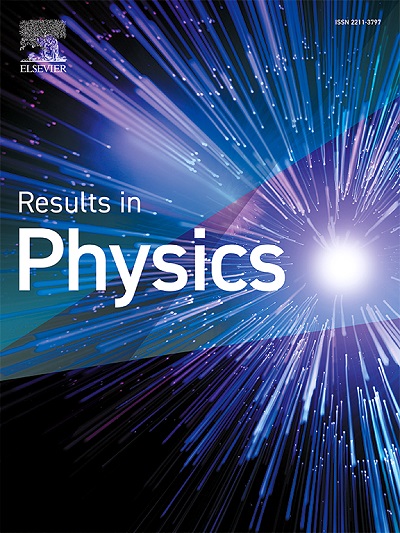基于表面等离子体和克尔型非线性腔的全光存储器
IF 4.4
2区 物理与天体物理
Q2 MATERIALS SCIENCE, MULTIDISCIPLINARY
引用次数: 0
摘要
提出了一种用于下一代集成光子电路的超高速全光等离子体存储结构。所提出的存储单元采用金属-绝缘体-金属(MIM)等离子波导与克尔型非线性纳米腔集成,实现高效的全光开关。通过系统时域有限差分(FDTD)仿真,我们展示了在保持精确波长可调性的同时,跨标准电信波长的鲁棒操作。优化后的设计实现了卓越的性能指标,包括7 MW/cm2的超低使能强度、1.2 μm2的紧凑占地面积和低于100飞秒的切换速度。对坡印亭矢量分布的详细分析揭示了等离子体纳米腔共振如何促进光学双稳性,为操作机制提供了关键的见解。与现有的全光存储解决方案相比,我们的架构提供了卓越的功率效率、增强的传输对比度和更高的集成密度。这些优点使所提出的设计成为高性能光学计算系统和片上存储器应用的理想候选者,解决了光子数据处理中的关键挑战。本文章由计算机程序翻译,如有差异,请以英文原文为准。
All-optical memory based on surface plasmons and Kerr-type nonlinear cavity
This paper presents a novel ultra-fast all-optical plasmonic memory architecture designed for next-generation integrated photonic circuits. The proposed memory cell employs metal–insulator-metal (MIM) plasmonic waveguides integrated with Kerr-type nonlinear nanocavities to enable efficient all-optical switching. Through systematic finite-difference time-domain (FDTD) simulations, we demonstrate robust operation across standard telecommunication wavelengths while maintaining precise wavelength tunability. The optimized design achieves remarkable performance metrics, including an ultra-low enable intensity of 7 MW/cm2, a compact footprint of 1.2 μm2, and sub-100-femtosecond switching speeds. Detailed analysis of Poynting vector distributions reveals how plasmonic nanocavity resonances facilitate optical bistability, providing critical insights into the operational mechanism. Compared with existing all-optical memory solutions, our architecture offers superior power efficiency, enhanced transmission contrast, and higher integration density. These advantages position the proposed design as an ideal candidate for high-performance optical computing systems and on-chip memory applications, addressing key challenges in photonic data processing.
求助全文
通过发布文献求助,成功后即可免费获取论文全文。
去求助
来源期刊

Results in Physics
MATERIALS SCIENCE, MULTIDISCIPLINARYPHYSIC-PHYSICS, MULTIDISCIPLINARY
CiteScore
8.70
自引率
9.40%
发文量
754
审稿时长
50 days
期刊介绍:
Results in Physics is an open access journal offering authors the opportunity to publish in all fundamental and interdisciplinary areas of physics, materials science, and applied physics. Papers of a theoretical, computational, and experimental nature are all welcome. Results in Physics accepts papers that are scientifically sound, technically correct and provide valuable new knowledge to the physics community. Topics such as three-dimensional flow and magnetohydrodynamics are not within the scope of Results in Physics.
Results in Physics welcomes three types of papers:
1. Full research papers
2. Microarticles: very short papers, no longer than two pages. They may consist of a single, but well-described piece of information, such as:
- Data and/or a plot plus a description
- Description of a new method or instrumentation
- Negative results
- Concept or design study
3. Letters to the Editor: Letters discussing a recent article published in Results in Physics are welcome. These are objective, constructive, or educational critiques of papers published in Results in Physics. Accepted letters will be sent to the author of the original paper for a response. Each letter and response is published together. Letters should be received within 8 weeks of the article''s publication. They should not exceed 750 words of text and 10 references.
 求助内容:
求助内容: 应助结果提醒方式:
应助结果提醒方式:


